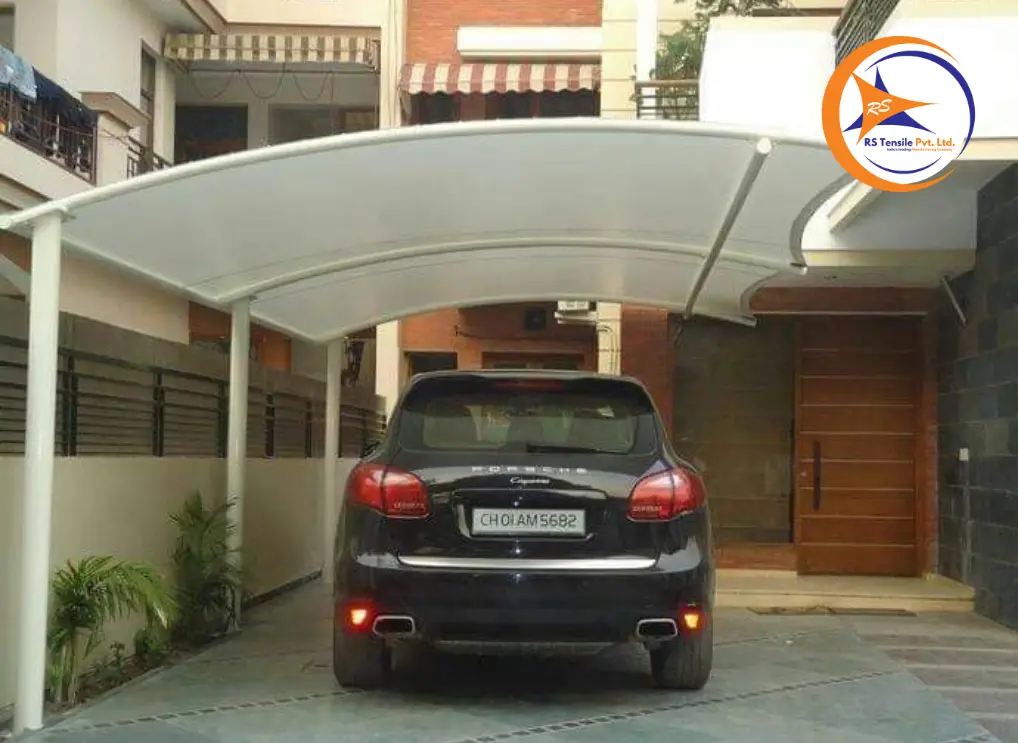Tensile Structure Installation Process
- Blog
- Tensile Structure Installation Process
Tensile Structure Installation Process - From Design to Completion
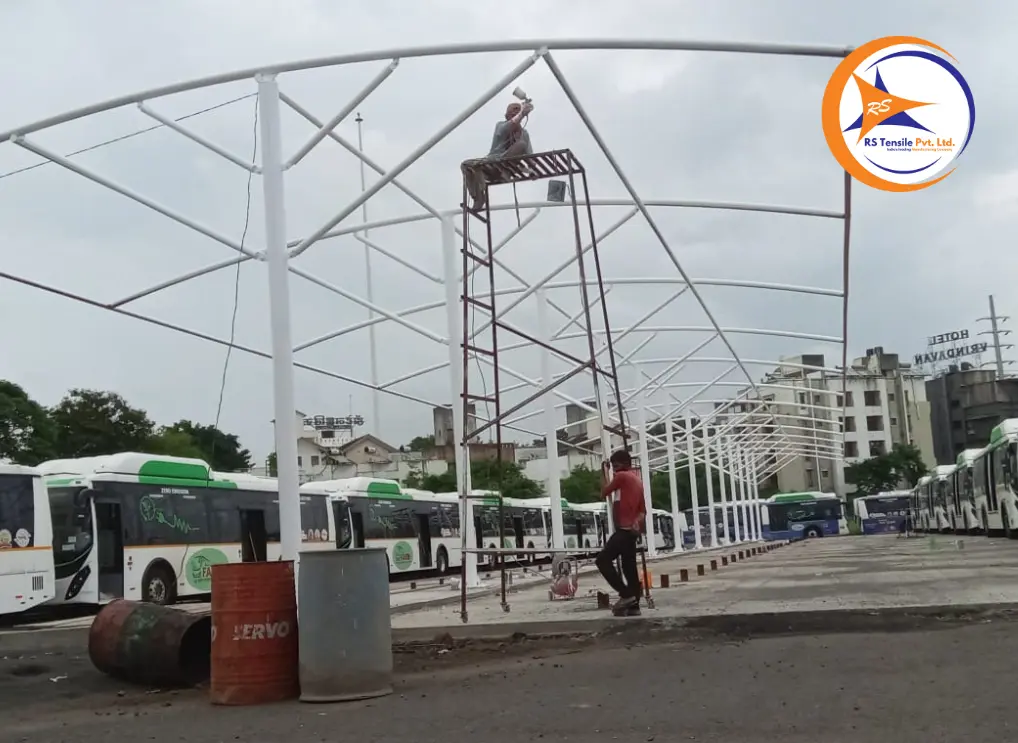
The installation of a tensile structure is a complex process that requires expertise, precision, and careful planning. At Shiwa Tensile, we have perfected our installation methodology over years of experience, ensuring that each project is executed flawlessly from concept to completion. This comprehensive guide walks you through our installation process, highlighting the key stages and considerations involved in bringing a tensile structure to life.
Initial Consultation and Site Assessment
Every successful tensile structure project begins with a thorough understanding of the client's needs and the site conditions. Our installation process starts with:
1. Client Requirements Analysis
Our team conducts detailed discussions with clients to understand their specific requirements, including the intended use of the structure, aesthetic preferences, budget constraints, and timeline expectations. This initial consultation helps us align our design and installation approach with the client's vision.
2. Site Survey and Assessment
A comprehensive site survey is essential to identify potential challenges and opportunities. Our team evaluates factors such as:
- Topography and Ground Conditions - Soil type, slope, and drainage patterns that may affect foundation design.
- Access and Logistics - Site accessibility for equipment and materials during construction.
- Environmental Factors - Wind patterns, sun exposure, and precipitation levels that influence design decisions.
- Existing Infrastructure - Utilities, buildings, and other structures that may impact the installation.
- Regulatory Requirements - Local building codes, zoning regulations, and permit requirements.
3. Feasibility Study
Based on the site assessment and client requirements, we conduct a feasibility study to determine the viability of the proposed tensile structure. This includes preliminary cost estimates, timeline projections, and identification of potential challenges that may need to be addressed during the design and installation phases.
Design and Engineering Phase
Once the initial assessment is complete, our team moves into the design and engineering phase, where the concept begins to take shape:
1. Conceptual Design
Our designers create initial concepts that balance aesthetic appeal with functional requirements. Using advanced 3D modeling software, we develop visual representations of the proposed tensile structure, allowing clients to visualize the final result and provide feedback before moving forward.
2. Structural Engineering
Our structural engineers analyze the proposed design to ensure it meets all safety and performance requirements. This includes:
- Load Analysis - Calculating wind, snow, and seismic loads to determine structural requirements.
- Material Selection - Recommending appropriate membrane materials and structural components based on performance requirements and environmental conditions.
- Connection Design - Designing the connections between the membrane and support structure to ensure proper load transfer and durability.
- Foundation Design - Developing foundation solutions that provide adequate support for the structure based on site conditions.
3. Detailed Drawings and Specifications
After finalizing the design, we create detailed construction drawings and technical specifications that guide the fabrication and installation process. These documents include precise measurements, material specifications, connection details, and installation instructions that ensure consistency and quality throughout the project.
4. Regulatory Approvals
We assist clients in obtaining necessary permits and approvals from local authorities. Our team prepares and submits all required documentation, including structural calculations, drawings, and specifications, to ensure compliance with building codes and regulations.
Fabrication and Material Preparation
With the design finalized and approvals in place, we move into the fabrication phase, where the components of the tensile structure are manufactured:
1. Membrane Fabrication
The membrane material is cut and welded according to the precise specifications developed during the design phase. Our fabrication facility utilizes computer-controlled cutting equipment to ensure accuracy, and skilled technicians perform high-frequency welding to create strong, durable seams. Quality control checks are conducted throughout the fabrication process to ensure the membrane meets all specifications.
2. Structural Component Fabrication
Steel and aluminum components are fabricated according to the engineering specifications. This includes cutting, drilling, welding, and finishing of structural elements such as masts, arches, and frames. All components are treated with appropriate corrosion protection measures, such as galvanizing or powder coating, to ensure durability and longevity.
3. Hardware and Accessories Preparation
Cables, fittings, tensioning systems, and other hardware components are prepared for installation. Each component is inspected and tested to ensure it meets quality standards and will perform as expected in the final structure.
4. Packaging and Logistics
Once fabrication is complete, all components are carefully packaged and labeled for transportation to the site. We coordinate logistics to ensure that materials arrive on schedule and in optimal condition, ready for installation.
"The installation of a tensile structure is a symphony of precision engineering and skilled craftsmanship. Every step, from design to final tensioning, must be executed with meticulous attention to detail to ensure a structure that performs beautifully for years to come."
Site Preparation and Foundation Work
While fabrication is underway, our team prepares the site for installation:
1. Site Clearing and Layout
The installation area is cleared of any obstacles, and the exact location of the structure is marked according to the design drawings. Precise layout is critical to ensure that all components fit together correctly during installation.
2. Excavation and Foundation Construction
Foundations are constructed according to the engineering specifications. This may involve excavation, formwork, reinforcement placement, and concrete pouring. The type of foundation varies depending on site conditions and structural requirements, ranging from simple concrete footings to complex deep foundation systems.
3. Anchor Bolt Installation
Anchor bolts are embedded in the foundations at precise locations to ensure proper alignment of structural components. These bolts are critical for securing the support structure and must be positioned accurately to avoid installation issues later.
4. Utility Relocation or Protection
If necessary, existing utilities are relocated or protected to prevent damage during installation. This may involve coordination with utility companies and implementation of protective measures to ensure safety and service continuity.
Structural Frame Installation
With foundations complete and cured, we begin installing the structural frame that will support the membrane:
1. Erection of Support Structures
Primary support elements such as masts, arches, or frames are erected and secured to the foundations. This process typically requires cranes or other lifting equipment, and our team follows strict safety protocols to ensure a safe and efficient installation.
2. Secondary Structural Elements
Secondary structural elements, such as purlins, edge cables, and support frames, are installed to create the framework that will support the membrane. These elements are positioned according to the design specifications and secured with appropriate connections.
3. Cable and Tensioning System Installation
Cables and tensioning systems are installed according to the engineering design. This includes positioning cables, installing fittings, and setting up tensioning devices that will be used to apply the appropriate tension to the membrane during installation.
4. Quality Checks and Adjustments
After installing the structural frame, our team conducts thorough quality checks to ensure all components are properly positioned and secured. Any necessary adjustments are made before proceeding with membrane installation.
Membrane Installation
The installation of the membrane is a critical phase that requires skill and precision:
1. Membrane Unfolding and Positioning
The fabricated membrane is carefully unfolded and positioned on the structural frame. This process requires coordination among team members to ensure the membrane is oriented correctly and not damaged during handling.
2. Initial Attachment
The membrane is initially attached to the structural frame at key points to secure it in position. This typically involves clamping or bolting the membrane edge to the support structure at predetermined locations.
3. Progressive Tensioning
The membrane is progressively tensioned using the installed tensioning systems. This is a delicate process that requires careful monitoring to ensure even tension distribution and prevent over-stressing of the material. Our technicians use specialized tools and techniques to achieve the optimal tension specified in the design.
4. Edge Detailing and Finishing
Once the membrane is properly tensioned, edge details and finishing elements are installed. This includes edge cables, clamping systems, and protective covers that provide a finished appearance and ensure the long-term durability of the membrane.
Final Inspection and Commissioning
With the tensile structure fully installed, we conduct a comprehensive inspection and commissioning process:
1. Quality Assurance Inspection
Our team performs a detailed inspection of the entire structure to verify that all components are installed correctly and meet quality standards. This includes checking membrane tension, connection integrity, and overall appearance.
2. Load Testing (if required)
For certain projects, load testing may be performed to verify the structural performance under expected conditions. This may involve applying simulated loads to the structure and monitoring its response.
3. Final Adjustments
Any necessary adjustments are made to ensure optimal performance and appearance. This may include fine-tuning membrane tension, adjusting connection details, or addressing cosmetic issues.
4. Cleaning and Site Restoration
The structure is cleaned to remove any installation residues, and the site is restored to its original condition (or better). This includes removing construction debris, repairing any disturbed landscaping, and ensuring the site is safe and presentable.
5. Client Orientation and Handover
We provide a comprehensive orientation to the client, covering operation, maintenance requirements, and warranty information. All relevant documentation, including as-built drawings, maintenance manuals, and warranty certificates, is provided to the client for their records.
Post-Installation Support
Our commitment to clients extends beyond the completion of installation:
1. Follow-Up Inspection
After a period of normal use (typically 3-6 months), we conduct a follow-up inspection to ensure the structure is performing as expected and address any issues that may have emerged during initial use.
2. Maintenance Services
We offer ongoing maintenance services to help clients keep their tensile structures in optimal condition. This includes regular inspections, cleaning, tension adjustments, and repairs as needed.
3. Technical Support
Our team remains available to provide technical support and assistance throughout the life of the structure. Whether clients have questions about operation, maintenance, or potential modifications, we are here to help.
4. Warranty Service
We stand behind our work with comprehensive warranty coverage. If any issues arise that are covered under warranty, we promptly address them to ensure the continued performance and satisfaction of our clients.
- Initial Planning - Comprehensive site assessment and feasibility studies to ensure project success.
- Design Engineering - Advanced 3D modeling and structural analysis for optimal performance.
- Precision Fabrication - Quality-controlled manufacturing of membranes and structural components.
- Expert Installation - Skilled technicians ensuring proper tensioning and finishing.
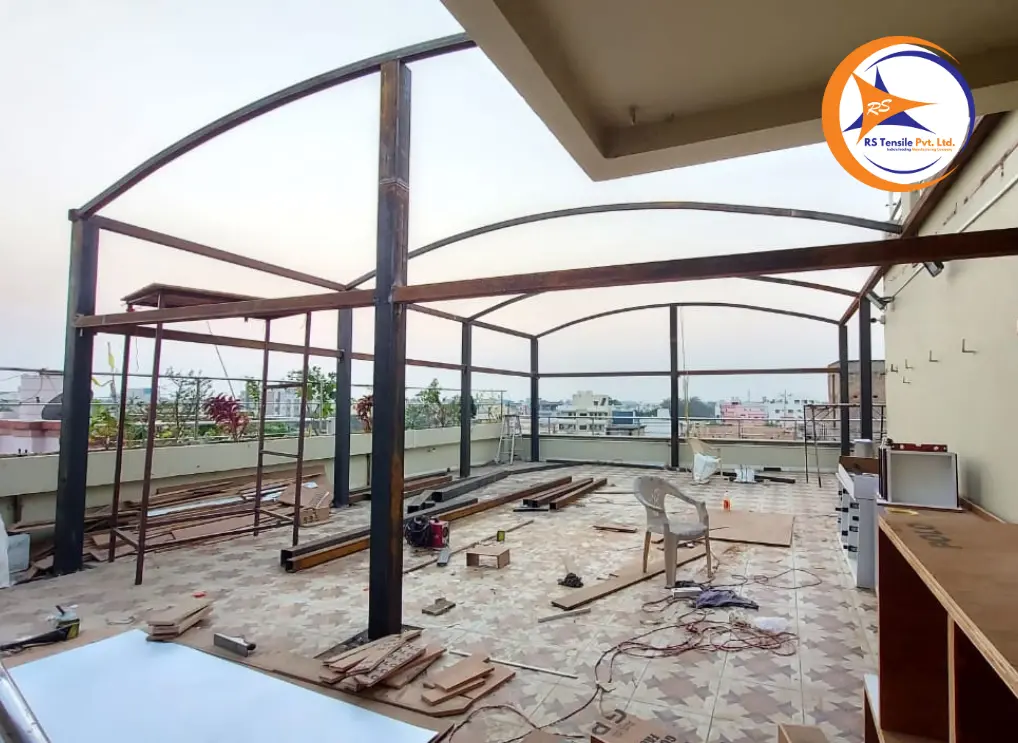
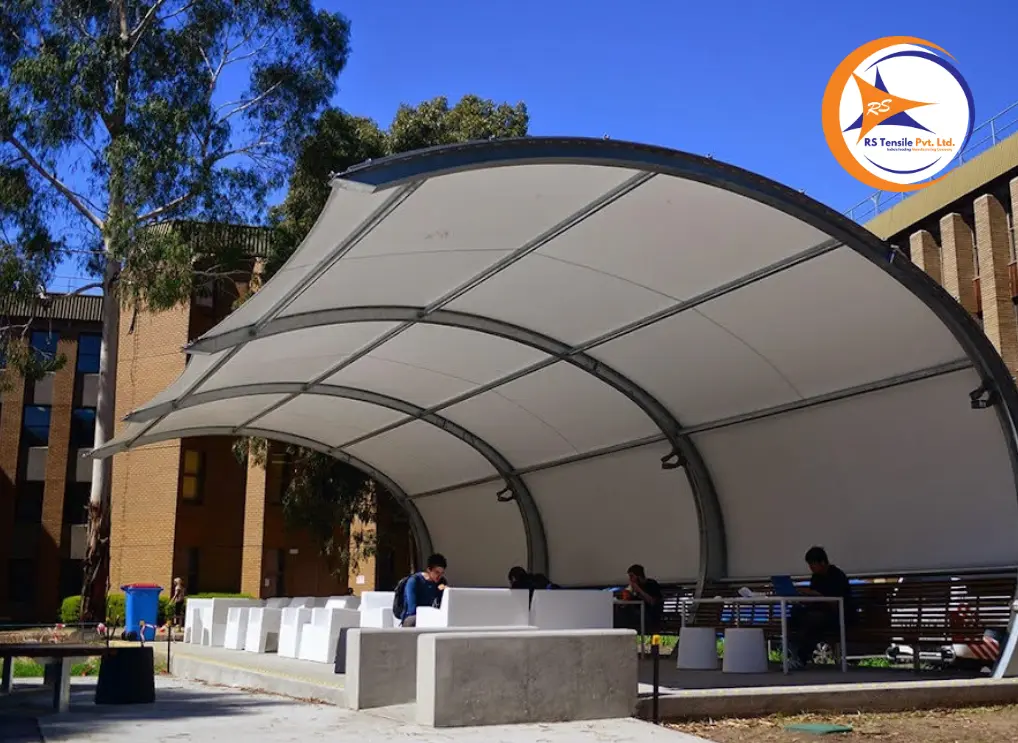
Factors Influencing Installation Timeline
The time required to install a tensile structure varies depending on several factors:
1. Project Scale and Complexity
Larger and more complex structures naturally require more time for design, fabrication, and installation. Intricate designs with multiple curves, varying heights, or custom features add complexity to the installation process.
2. Site Conditions
Challenging site conditions, such as limited access, poor soil conditions, or extreme weather, can extend the installation timeline. Sites with existing structures or utilities that require careful coordination also add complexity to the installation process.
3. Material Availability
The availability of materials, particularly specialized membrane materials or custom components, can impact the project timeline. We work closely with suppliers to minimize delays and ensure timely delivery of materials.
4. Regulatory Requirements
Projects in areas with stringent regulatory requirements or lengthy approval processes may experience delays. Our team proactively manages the approval process to minimize impacts on the installation timeline.
5. Weather Conditions
Outdoor installation of tensile structures is weather-dependent. Extreme wind, rain, or temperature conditions can delay installation activities. We monitor weather forecasts closely and plan installation activities accordingly.
Safety Considerations During Installation
Safety is paramount during the installation of tensile structures. Our team follows rigorous safety protocols to protect workers, clients, and the public:
1. Site Safety Planning
Before installation begins, we develop a comprehensive site safety plan that identifies potential hazards and outlines mitigation measures. This includes establishing safe work zones, implementing traffic control measures (if necessary), and ensuring emergency procedures are in place.
2. Personal Protective Equipment (PPE)
All workers are required to wear appropriate PPE, including hard hats, safety glasses, gloves, and fall protection equipment when working at height. We ensure that all PPE is properly maintained and used correctly.
3. Equipment Safety
All equipment used during installation, including cranes, lifts, and power tools, is inspected regularly to ensure it is in safe working condition. Only trained and certified operators are allowed to operate equipment, and strict protocols are followed for equipment setup and operation.
4. Fall Protection
Working at height is an inherent part of tensile structure installation. We implement comprehensive fall protection measures, including guardrails, safety nets, and personal fall arrest systems, to prevent falls and protect workers.
5. Lifting and Rigging Safety
Proper lifting and rigging techniques are critical when installing heavy structural components. Our team follows established protocols for lifting operations, including proper load calculation, rigging inspection, and communication procedures.
Conclusion: A Collaborative Process
The installation of a tensile structure is a collaborative process that requires expertise, coordination, and attention to detail. From initial consultation to final handover, our team at Shiwa Tensile is committed to delivering exceptional results that meet our clients' needs and exceed their expectations.
By following a systematic approach to installation, we ensure that each project is completed efficiently, safely, and to the highest quality standards. Our experience and expertise allow us to navigate challenges effectively and deliver tensile structures that perform beautifully for years to come.
If you're considering a tensile structure for your next project, we invite you to contact us to learn more about our installation process and how we can help bring your vision to life. Our team is ready to assist you with every step of the process, from initial concept to final completion.
Tensile Structure Maintenance Guide
Tensile Structure Manufacturer in Delhi
All Blog Posts
-
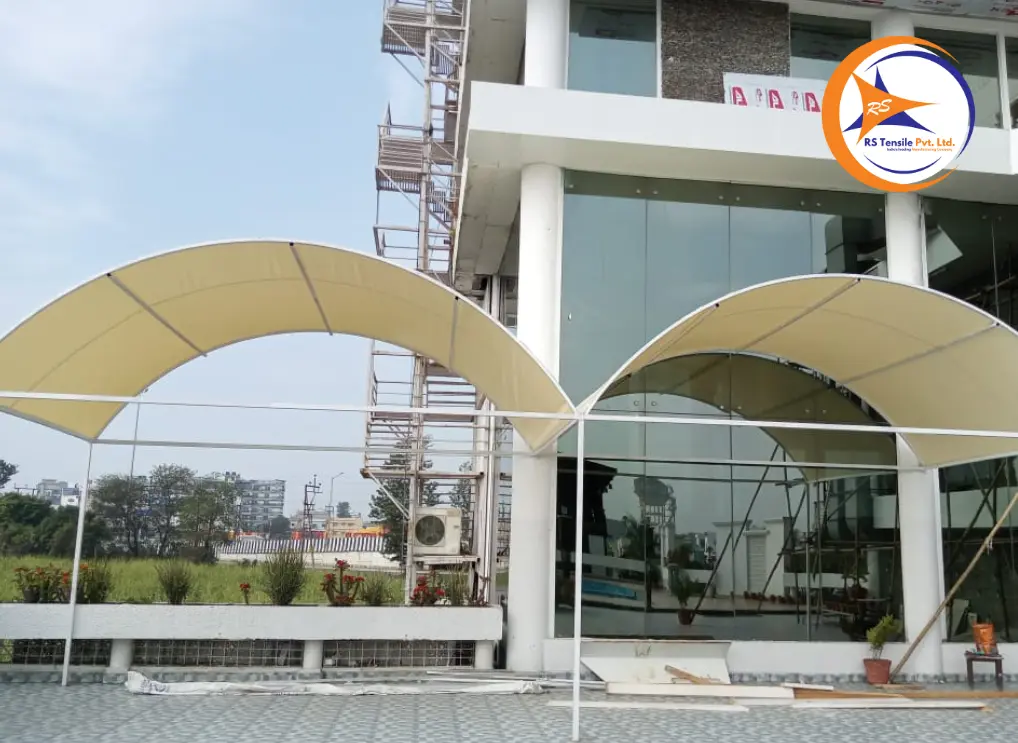
-
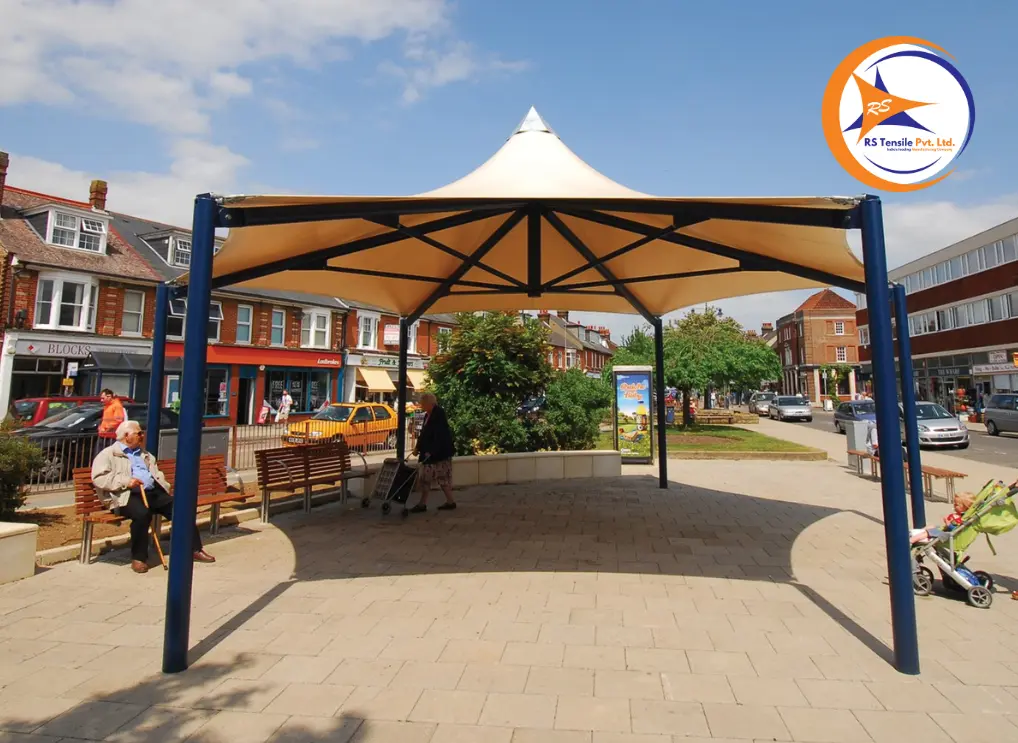
Tensile Structure Best Price in Delhi
Jul 28, 2025 -
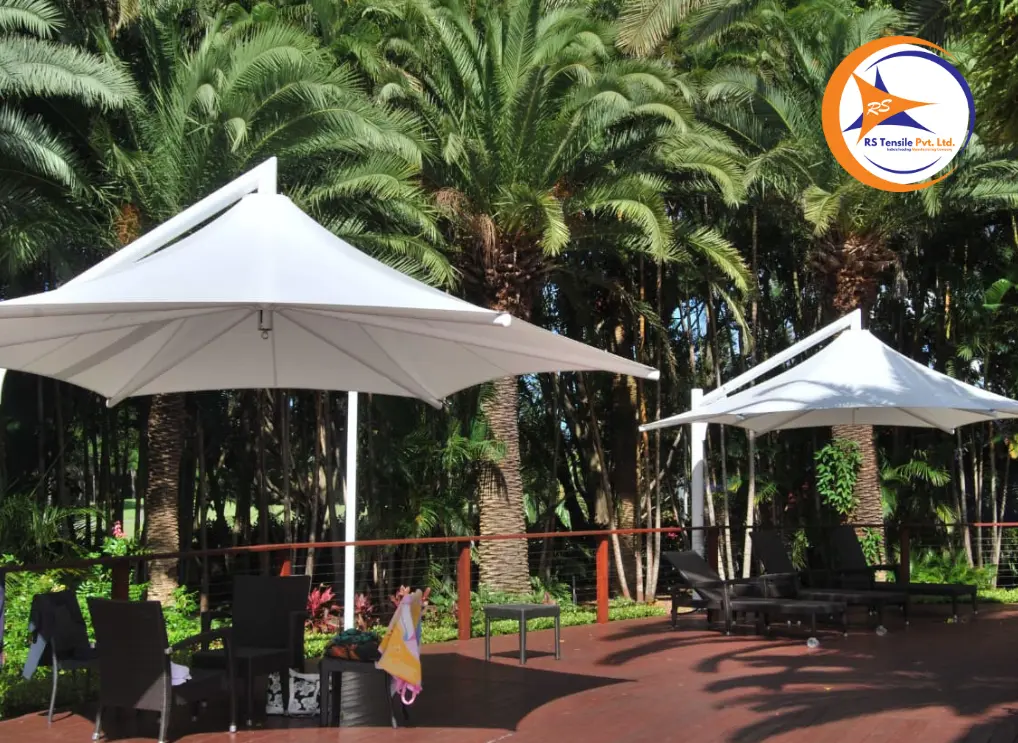
Tensile Structure Manufacturer in India
Jul 10, 2025 -
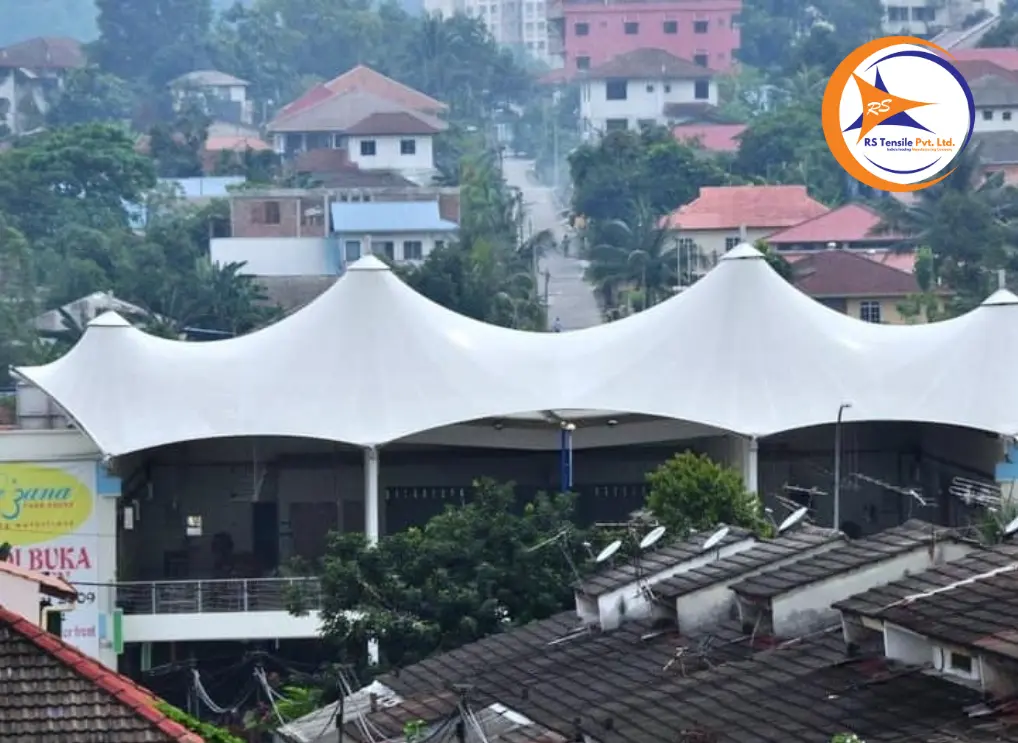
What is Tensile Structure
Jun 25, 2025 -
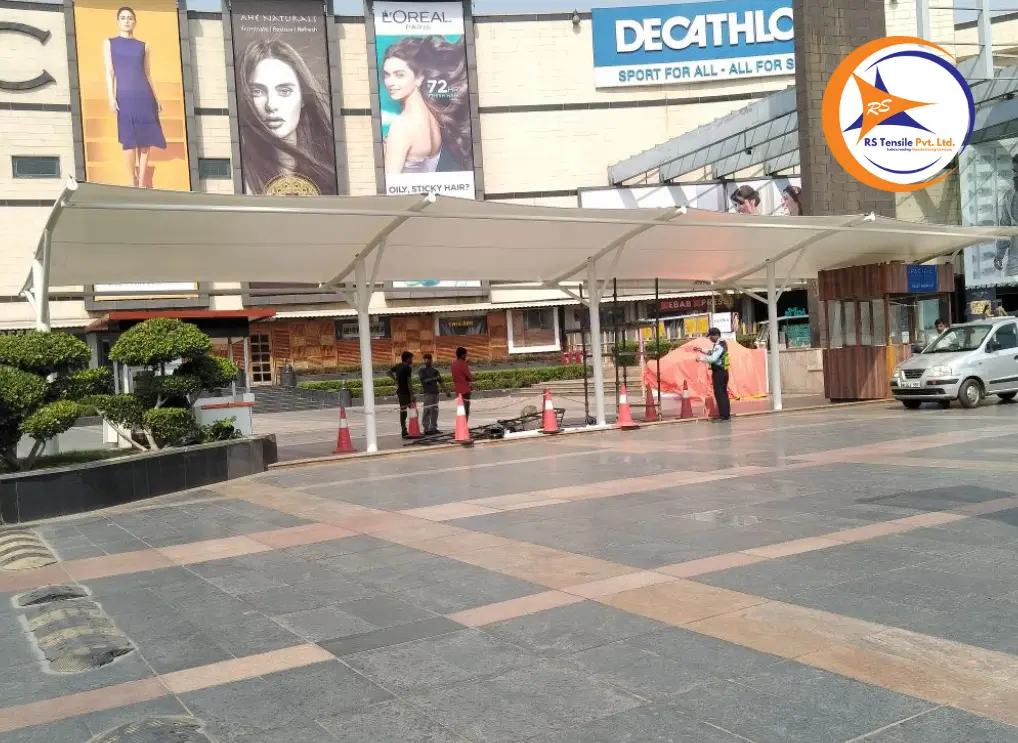
Tensile Structure Companies in Uttar Pradesh
Jun 15, 2025 -
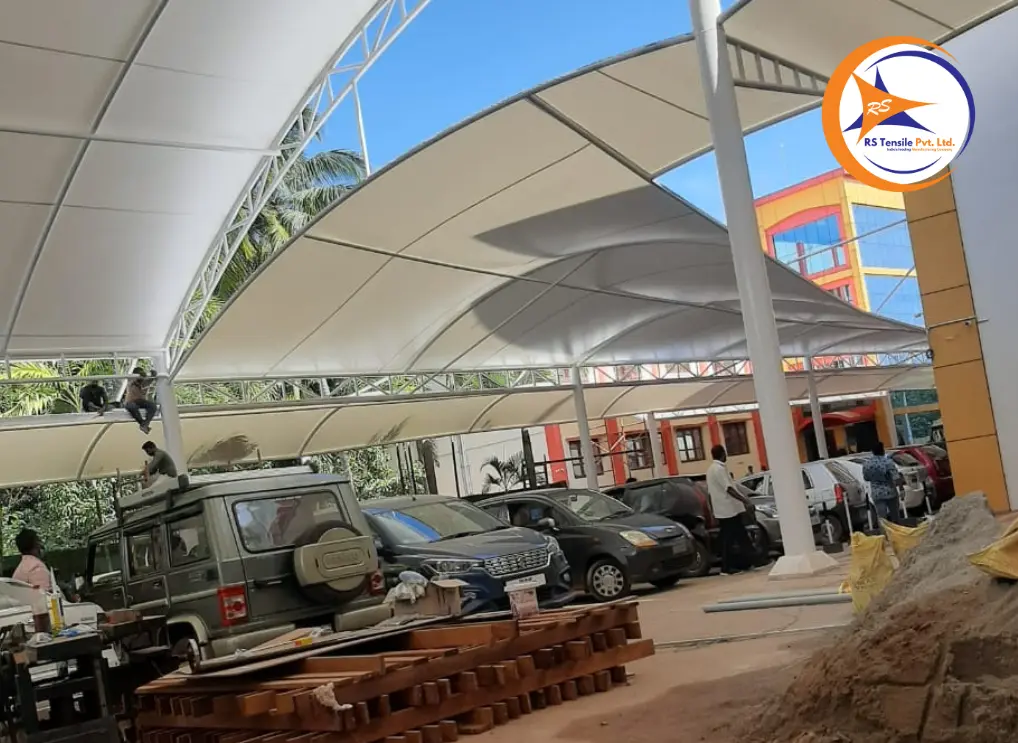
Tensile Car Parking Structure Manufacturer
Jun 05, 2025 -

Modern Tensile Structure Design Trends in India
May 20, 2025 -
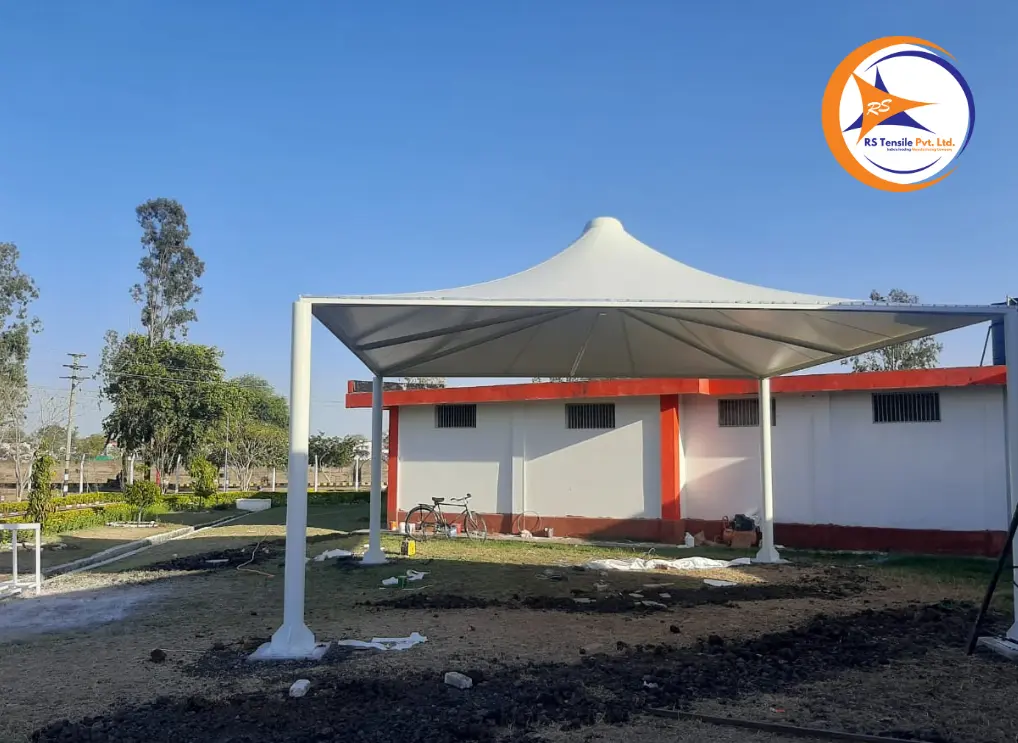
Tensile Gazebo Structure Applications
May 01, 2025 -
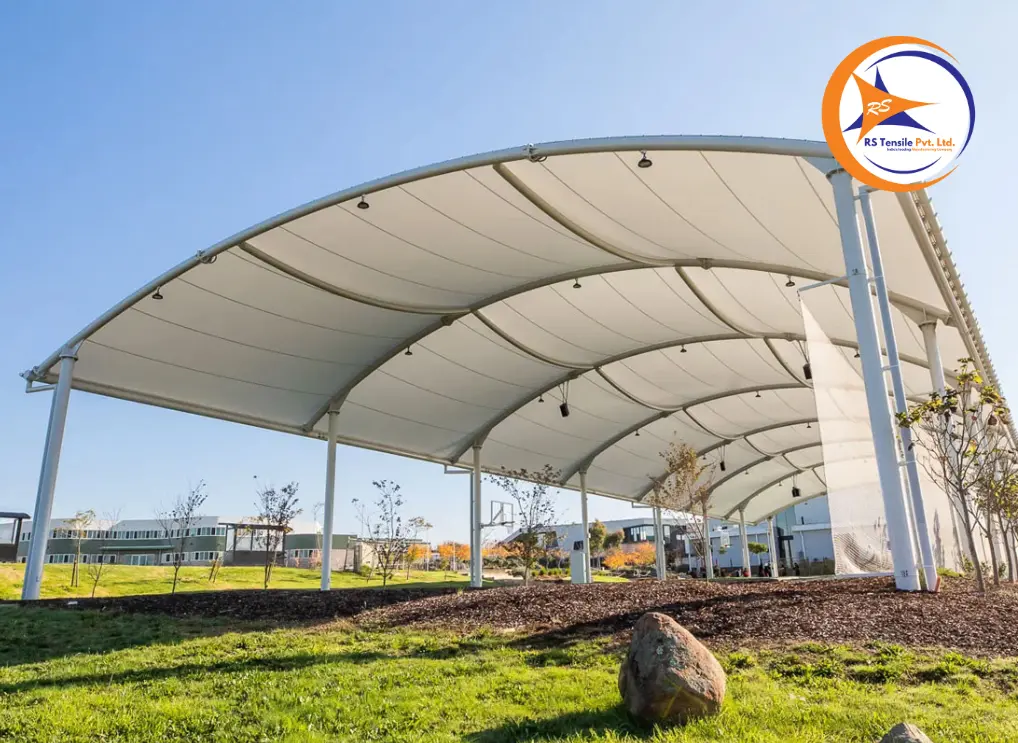
Tensile Membrane Structure Materials
Apr 20, 2025 -

Tensile Structure Maintenance Guide
Apr 10, 2025 -

Tensile Structure Installation Process
Apr 01, 2025
Submit Your Enquiry
RS Tensile Support
Online now




